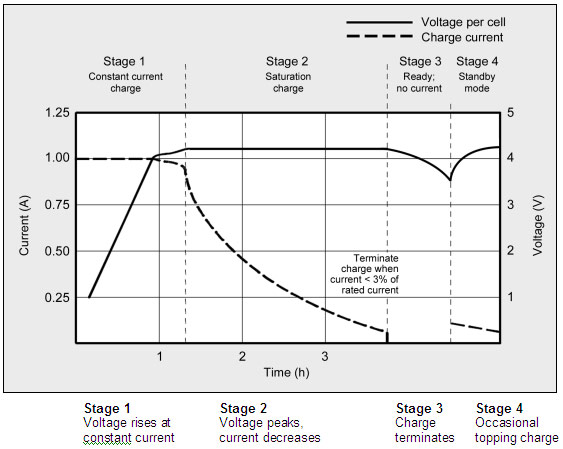Lithium Charging is different from lead acid, the charger needs to switch from Constant Current (CC) to Constant Voltage (CV) if I’m correct its supposed to happen at 90%.
One of the reason why I like to keep the SOC low to avoid trouble 
My hybrid MPPT Inverters have lithium settings.
Sadly only for S15.
Good thing is it shouldn’t get easily overcharged that way:-)
It should go to CV on time.
I set it to lower settings now, as the DIYBMS isn’t installed yet.
Anyways, Yes.
The chance that one cell gets higher charge before balance is huge.
I have (a real) 1A active Balancer (about $80) from China, that Balance always, 24/7 no matter the SOC.
That helps.
For 90 days it’s my only “BMS”, no any problems, but I did limited my charge current to max 150A (for [email protected])
(16*280Ah is being added when the setup is ready to finish)
I know many people say balancing isn’t really needed with good matched cells.
I don’t know why they say this, as it’s the nature of LiFePO4 to get out of balance.
(Actually all batteries that are build up of separate cells)
Lead acid is special to balance automatically between the cells, LiFePO4 doesn’t.
DIYBMS have a huge advantage to be able to set the cell balance start voltage, and that it’s capable of burning off a lot of current.
Relative speaking, where the Daly does 35mA, this one 850Ma without cooling.
There are 20* 1/4 watt resistors to do the dump load. That would make about 1.5A max.
I’m equipping my cell PCB’s with aluminium coolblocks, perhaps overkill.
It won’t be enough to burn off all charge, sure, it will slow down the charge, so the others can catch up.
If set early at 90% SOC it should do the trick 
I manually charged cells with PSU a few times and witnessed that it gets stuck at 3.49V for ages. Once it hits the 3.5 it goes fast to 3.65 and up.
Cell voltage during charge is not SOC.
I’m working on my setup, not installed yet.
So I need to find the sweet spot.
Probably setting it at 3.48 is soon enough to let the rest catch up.
@John_Taves, Great thanks for the improvement to make the BMS go into AP mode, so it keeps on working and keeps being accessable!
With possible the shunt added and “DYIBMS v5” (@stuart, sorry for using that name again) or better the development of spin-off “actibms” active balance we are making a wonderful product together!!
Happy to be part of this wonderful project!!

